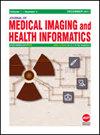Assessment of Knowledge, Perception and Practices about Malaria in Some Rural Communities of South West Region, Cameroon
Journal of Medical Imaging and Health Informatics
Pub Date : 2020-01-01
DOI:10.37421/jhmi.2020.11.344
引用次数: 1
Abstract
Background: Understanding local knowledge about malaria can help in designing sustainable community-based malaria control programs. Thus, the purpose of this study was to generate information on knowledge, perceptions and practices and the preventive measures as regards to malaria in the rural farming community. Methods: A cross-sectional survey was conducted September to October 2013 among 851 households from 9 villages in Ekondo Titi Subdivision using structured questionnaire. Questions assessed knowledge, perceptions and practices about malaria among tribal villagers. The data were analyzed using SPSS 20.0 statistical software program. Results: Most of the respondents 58.2% attributed malaria to mosquito bites. However, some of the respondents (28.8%) mentioned drinking dirty water, midges and standing in the sun as the causes of malaria transmission. Avoiding stagnant water (60.9%) and Clearing of bushes (71.5%) were the most frequently mentioned malaria preventive measures perceived and practiced by the respondents. Only 11.05% of 851 participants owned at least one long lasting insecticide treated net (LLIN). Thirty-nine point nine (39.9%) of respondents indicated that they experienced the last malaria episode more than three months ago. Malaria chemoprophylactic treatment was related to the educational status of the participants (p=0.001) Conclusions: Despite this fair knowledge and good attitudes, practices towards malaria prevention and control were poor. A considerable proportion had misconceptions about the cause and transmission of malaria suggesting the necessity of health education. To close the gap between knowledge about transmission and ownership and use of bed nets as a preventive measure, there is the need to re-energize the CHWs activities and implement the concept of night watch in the rural communities.喀麦隆西南地区部分农村社区疟疾知识、认知和实践评估
背景:了解当地关于疟疾的知识有助于设计可持续的社区疟疾控制项目。因此,这项研究的目的是提供关于农村农业社区疟疾方面的知识、观念和做法以及预防措施的信息。方法:2013年9 - 10月,采用横断面调查方法,对艾康多蒂蒂分区9个村851户家庭进行结构化问卷调查。问题评估了部落村民关于疟疾的知识、观念和做法。采用SPSS 20.0统计软件对数据进行分析。结果:58.2%的调查对象将疟疾归因于蚊虫叮咬。然而,一些答复者(28.8%)提到饮用脏水、蚊虫和站在阳光下是疟疾传播的原因。避免死水(60.9%)和清除灌木丛(71.5%)是受访者最常提到的疟疾预防措施。在851名参与者中,只有11.05%的人拥有至少一顶长效杀虫剂处理过的蚊帐。39.9%的答复者表示,他们最后一次疟疾发作是在三个多月前。疟疾化学预防治疗与受试者的受教育程度有关(p=0.001)。结论:尽管有合理的知识和良好的态度,但对疟疾预防和控制的实践较差。相当大比例的人对疟疾的起因和传播存在误解,这表明有必要进行卫生教育。为了缩小人们对疾病传播和所有权的认识与使用蚊帐作为预防措施之间的差距,有必要重新启动卫生保健中心的活动,并在农村社区实施夜间值班的概念。
本文章由计算机程序翻译,如有差异,请以英文原文为准。
求助全文
约1分钟内获得全文
求助全文
来源期刊

Journal of Medical Imaging and Health Informatics
MATHEMATICAL & COMPUTATIONAL BIOLOGY-RADIOLOGY, NUCLEAR MEDICINE & MEDICAL IMAGING
自引率
0.00%
发文量
0
审稿时长
6-12 weeks
期刊介绍:
Journal of Medical Imaging and Health Informatics (JMIHI) is a medium to disseminate novel experimental and theoretical research results in the field of biomedicine, biology, clinical, rehabilitation engineering, medical image processing, bio-computing, D2H2, and other health related areas. As an example, the Distributed Diagnosis and Home Healthcare (D2H2) aims to improve the quality of patient care and patient wellness by transforming the delivery of healthcare from a central, hospital-based system to one that is more distributed and home-based. Different medical imaging modalities used for extraction of information from MRI, CT, ultrasound, X-ray, thermal, molecular and fusion of its techniques is the focus of this journal.
 求助内容:
求助内容: 应助结果提醒方式:
应助结果提醒方式:


